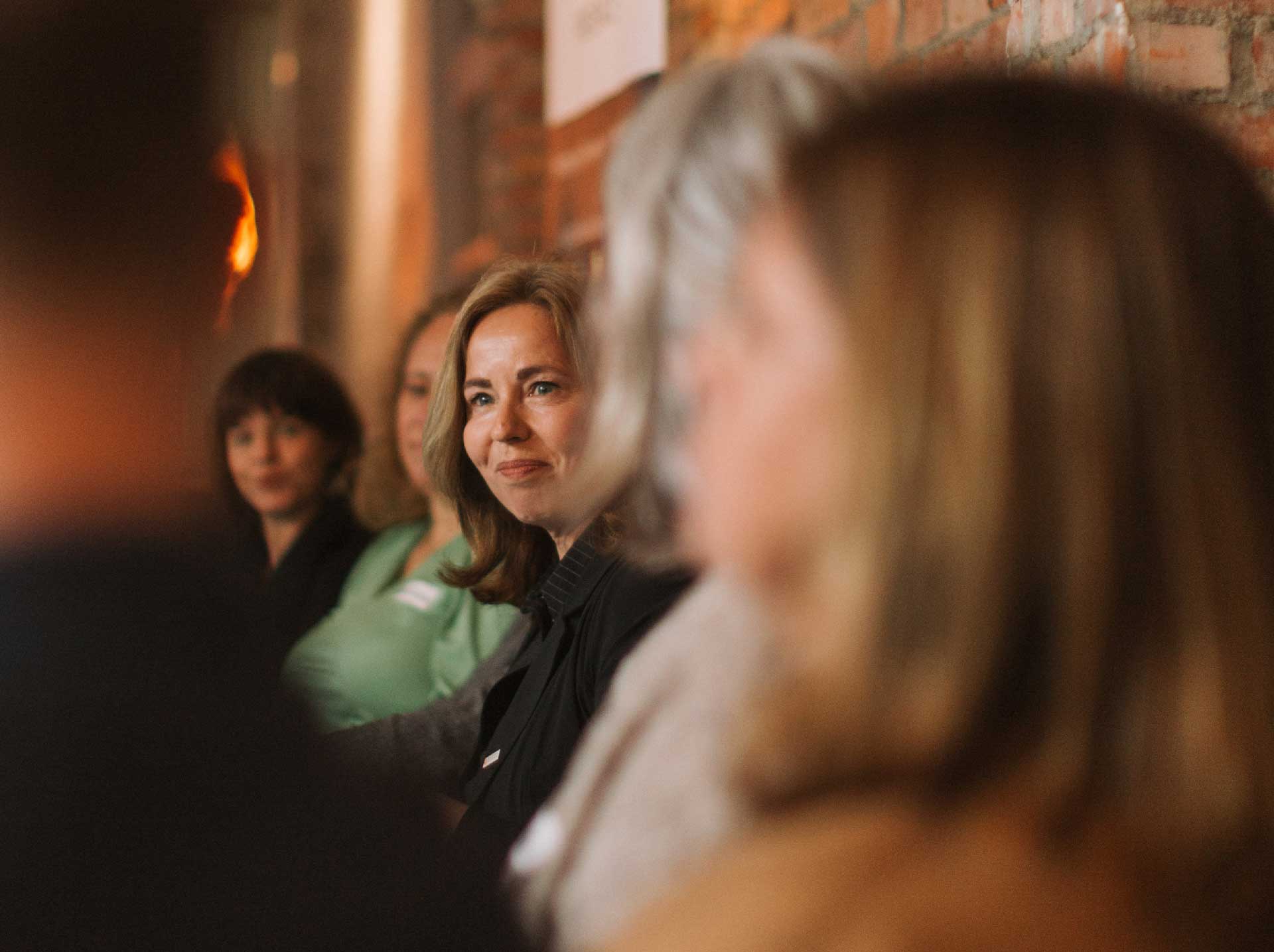YOUR PRESENCE SPEAKS MORE LOUDLY THAN YOUR WORDS

“How can you describe something that has specifically affected you through experiencing it?” Since coming into contact with Speaking Circles® and Relational Presence, we’ve searched for words and ways to explain the profound effect this has on you. We soon discovered that trying to explain it was no easy matter. Enthusiasm for the profound effect of Relational Presence comes after experiencing it. How did we manage to convince people to take part in the first place? Statements such as ‘transformational in all areas of life’ are for many, more off-putting than inviting.
The incredible thing is that Relational Presence is almost too simple for words.
The essence is that you are consciously present with all your attention, in the here and now and are available for connecting with yourself and others, using a peripheral, relaxed gaze. When you are present in this way, seeing and hearing others and letting yourself be seen and be heard, the effects are substantial. An atmosphere of security, trust and mutual respect arises where everyone is treated equally and you dare to say what comes to mind. In an extensive study carried out by Google looking at its most successful teams, this was called ‘Psychological safety’. After a wide-ranging search this turned out to be the key element in successful teams. Not team composition, not individual knowledge or experience, but the way everyone in the team is seen and heard for who he or she is.
How can you create a feeling of psychological safety?
We have an answer that works and that everyone can master in a relatively short time: Relational Presence.
Do we need to learn this (again)? Yes, however simple the methodology, discovering it requires a safe learning environment.
Perhaps, this is because it is missing in so many places. One of our colleagues, Peter Lake, who teaches at an Engineering School in Toulouse, runs a programme called: “Disconnect to Connect”. It is a great success. Students want to learn how to communicate in an authentic and interconnected way, in real person-to-person contact. And their future employers want this too! Experienced teachers come to us because they stopped looking at and seeing individual students years ago.
In many places the lack of attention during communication is shocking.
Not only at work, but also at home. Our habit of not being in the here-and-now has become so normal that we barely notice the effects. Recently a participant said “I always try to ask my children ‘how was your day?’ I now realise I scarcely paid any attention when they answered. I didn’t look at them, I didn’t really listen.”
HOW DO YOU CREATE THIS? WHAT DO YOU NEED?
One second. One second to slow down. One second to realise that the quality of connection always has to do with the quality of our attention. Where is your attention when you are speaking or listening? Do you look when speaking? Do you see the other person while you are speaking? Do you look while listening? Do you really see the other person? Are you really listening?
In an article on the internet, Katherine Schafler writes that Maya Angelou suggested there are four questions we unconsciously but almost continuously, ask ourselves in every situation involving other people:
1. DO YOU SEE ME?
2. DO YOU CARE THAT I’M HERE?
3. AM I ENOUGH FOR YOU BEING MYSELF? OR DO YOU WANT ME TO BE DIFFERENT IN SOME WAY?
4. CAN I TELL FROM THE WAY YOU LOOK AT ME THAT YOU REALLY SEE ME?
We haven’t been able yet to find out when and where Angelou suggested this. But the questions certainly resonate. Imagine how it is if you can answer all these questions with ‘yes’ when you communicate with your partner, child, colleague, boss, client, neighbour, friends and yourself. And how it is when this also applies to the other person/people as well.
How can you do this in such a way that the other person feels genuinely seen and that you also stay connected to yourself? Relational Presence is our answer. Being in the here-and-now, giving your full attention to the other person through a relaxed, peripheral gaze and being open for connection.
You can learn this in training sessions given by Relational Presence Facilitators. Fin a licensed Facilitators in your country/area or contact us to become a Relational Presence Facilitator yourself.



